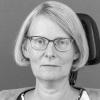Senior researcher Healthcare System and Governance
Publicatie
Elaboration of socio-economic differences in disease-specific prevalence in The Netherlands.
Zee, J. van der, Kroneman, M., Volkers, A. Elaboration of socio-economic differences in disease-specific prevalence in The Netherlands. European Journal of Public Health: 2007, 17(suppl. 2), p. 127-128. Abstract. 15th Annual EUPHA Meeting: "The future of public health in the Unified Europe", Helsinki, 11-13 oktober 2007.
Background: A low social-economic position is consistently associated with poor health and (physician diagnosed) morbidity. Several diseases are known for their socio-economic gradient: depression, diabetes, ischaemic heart disease, arthritis, muscle pain, neck- and back-pain and tension headache, in the sense that a lower economic position is associated with a higher prevalence for these diseases. In this paper, we aim to elaborate the relationship between specific diseases and socio-economic status. Previous research showed that for some diseases a (negative) linear relationship between socio-economic status and disease prevalence existed, however, for other diseases, this relationship was of a higher order (2nd, 3rd) or non-existing at all. Our research question is: to what extent are diseases currently presented in General Practice related to socio-economic status. Methods: Our data were derived from the National Survey of General Practice including 104 practices in the Netherlands. 174 654 persons between 15 and 64 year participated the study. The social economic position was assessed by the International Socio-Economic Index of occupational position (ISEI) and was based on the highest ISEI score within a household. Outcome measures: prevalence of ICPC-codes with a prevalence of more than 5/1000 persons (144 ICPC-codes). For socioeconomic position (ISEI) linear, reciprocal, quadratic and parabolic functions were fitted for ICPC code, controlled for age and gender. Results: Not all diseases have a relationship with socio-economic position. For the diseases that are associated with socioeconomic position, the most of them have the classical relationship, in the sense that a lower socio-economic position lead to a higher risk for the disease. However, there are notable exceptions. For instance, for males for instance symptoms/complaints of the lower back (L02) and several skin related diseases (S03, S79, S82, S86 and S99) have a positive linear association with socio-economic status, while some mental disorders (P01, P76 and P78) show a reciprocal association. For females, the associations with social economic status for some diseases differ from those for males. (Results are preliminary). Conclusions: The general notion that a low social-economic status is associated with higher health risks is appears to be a too simple view of reality. A more differentiated approach is therefore necessary. The challenge is to find explanations for the different associations. (aut. ref.)
Background: A low social-economic position is consistently associated with poor health and (physician diagnosed) morbidity. Several diseases are known for their socio-economic gradient: depression, diabetes, ischaemic heart disease, arthritis, muscle pain, neck- and back-pain and tension headache, in the sense that a lower economic position is associated with a higher prevalence for these diseases. In this paper, we aim to elaborate the relationship between specific diseases and socio-economic status. Previous research showed that for some diseases a (negative) linear relationship between socio-economic status and disease prevalence existed, however, for other diseases, this relationship was of a higher order (2nd, 3rd) or non-existing at all. Our research question is: to what extent are diseases currently presented in General Practice related to socio-economic status. Methods: Our data were derived from the National Survey of General Practice including 104 practices in the Netherlands. 174 654 persons between 15 and 64 year participated the study. The social economic position was assessed by the International Socio-Economic Index of occupational position (ISEI) and was based on the highest ISEI score within a household. Outcome measures: prevalence of ICPC-codes with a prevalence of more than 5/1000 persons (144 ICPC-codes). For socioeconomic position (ISEI) linear, reciprocal, quadratic and parabolic functions were fitted for ICPC code, controlled for age and gender. Results: Not all diseases have a relationship with socio-economic position. For the diseases that are associated with socioeconomic position, the most of them have the classical relationship, in the sense that a lower socio-economic position lead to a higher risk for the disease. However, there are notable exceptions. For instance, for males for instance symptoms/complaints of the lower back (L02) and several skin related diseases (S03, S79, S82, S86 and S99) have a positive linear association with socio-economic status, while some mental disorders (P01, P76 and P78) show a reciprocal association. For females, the associations with social economic status for some diseases differ from those for males. (Results are preliminary). Conclusions: The general notion that a low social-economic status is associated with higher health risks is appears to be a too simple view of reality. A more differentiated approach is therefore necessary. The challenge is to find explanations for the different associations. (aut. ref.)

